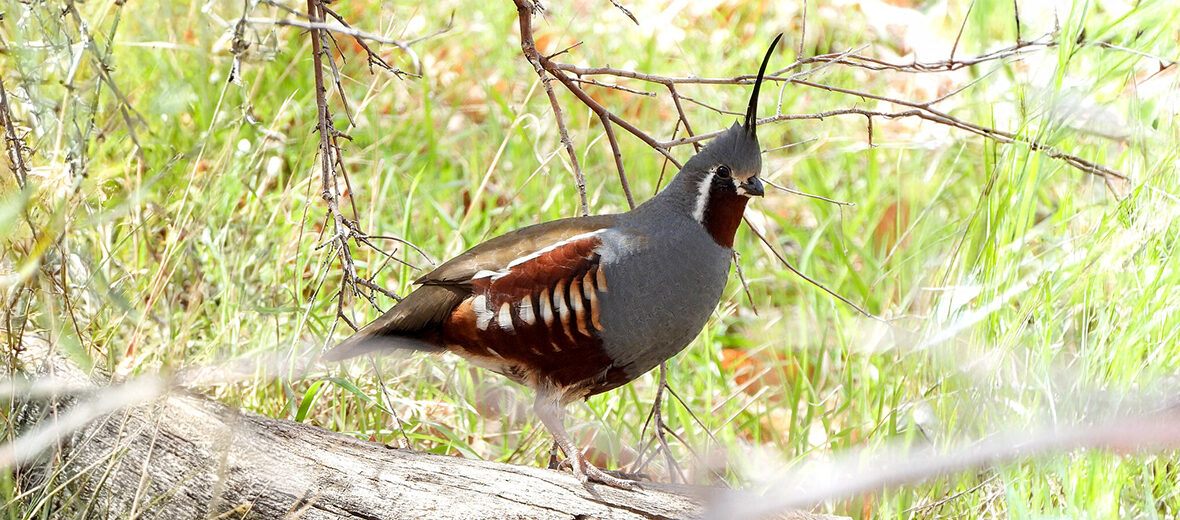
The mountain quail, is the largest quail species in the United States. Their ancestors diverged from other New World (found in the Americas) quails earlier than the bobwhites, approximately 6,000,000 years ago. These birds face few threats, such as habitat loss and destruction, and are abundant throughout their ranges, numbering an estimated 260,000 wild individuals. Therefor, the IUCN lists these birds as Least Concern. However, their populations are decreasing.
First the Stats…
Scientific name: Oreortyx pictus
Weight: Up to 9.2 ounces
Length: Up to 11 inches
Wingspan: Up to 16 inches
Lifespan: Up to 3 years
Now on to the Facts!
1.) These birds are the only ones in the genus Oreortyx, which is sometimes included in Callipepla (crested quail).
2.) They prefer mountainous chaparral west of the Rocky Mountains, from British Columbia in Canada, and some areas of Washington state in the United States, down to the Baja Peninsula, in Mexico. Some also like to inhabit lava reefs in the Modoc Plateau of California, and the chaparral and wooded areas of the Sierra Nevada Mountains, & Coastal Ranges.
3.) These quails can be found from sea level up to 9,800 foot elevations.
4.) Mountain quails primarily move around on foot, and can move rather quickly through various brush and undergrowth.
5.) When they do fly, it is an explosive burst of wing flaps, followed by a slow and steady glide to the ground.
But wait, there’s more on the mountain quail!
6.) They are only mildly social and gather into bevies of up to 20 individuals.
7.) Adults consume mainly plant matter and various seeds, while the juveniles prefer a more insectivorous (eat insects) diet, that wanes into a plant and seed preference as they get older.
Did you know…?
A petition to list the mountain quail as Endangered or Threatened was denied by the U.S. Fish and Wildlife Service in 2003. That being said though, outside of California, the birds’ habitat has been decreasing in Idaho, Nevada, eastern Oregon, and Washington due to drought and human activity.
8.) These, like other quails, are monogamous (mate for life).
9.) Females lay up to 10 eggs that hatch in up to 25 days.
10.) Chicks are precocial (self sufficient), and leave the nest with their parents within just hours after hatching.
But wait, there’s still more on the mountain quail!
11.) Bobcats, cats, coyotes, dogs, foxes, hawks, owls, rattlesnakes, and weasels all prey on these quails.
12.) Mountain quails are diurnal (active during the day).
Now a Short Mountain Quail Video!
Be sure to share & comment below! Also, check out the Critter Science YouTube channel. Videos added regularly!
Want to suggest a critter for me to write about? Let me know here.
Some source material acquired from: Wikipedia and IUCN
Photo credit: James M. Maley – iNaturalist




